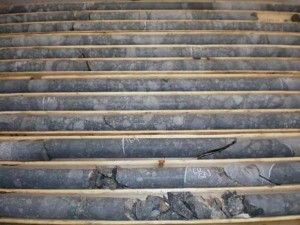 THUNDER BAY – Zenyatta Ventures Ltd. (TSX VENTURE:ZEN) have announce the contracting of industrial minerals specialist, Don Hains of Hains Technology Associates and provide an update on developments at the Albany Graphite Deposit.
THUNDER BAY – Zenyatta Ventures Ltd. (TSX VENTURE:ZEN) have announce the contracting of industrial minerals specialist, Don Hains of Hains Technology Associates and provide an update on developments at the Albany Graphite Deposit.
In a media release the company states, “Don Hains, P.Geo., MBA is an industrial minerals and marketing specialist with more than 30 years of experience in development, use and analysis of industrial minerals, including graphite. He has held product research and business development responsibilities with Fiberglas Canada Inc. and Domtar Construction Materials, and has been consulting in the field of industrial minerals, markets and economics for the past 25 years. Assignments have ranged from valuation reports to feasibility and market studies.
“Mr. Hains obtained a Chemistry degree from Queen’s University and an MBA in Finance and Marketing from Dalhousie University. In addition to his own practice, Don acts as the industrial minerals specialist for several major consulting firms in Canada and is a frequent speaker at major industrial mineral conferences, having presented papers on several different commodities”.
Aubrey Eveleigh, President and CEO shared, “We are very pleased to add an individual of Don Hains’ caliber to lead us toward a Preliminary Economic Assessment of the Albany graphite deposit. A management team with strong graphite experience is obviously a necessity for success. Don is an expert in the analysis of geology, markets and economics for industrial minerals. He has conducted studies on a wide range of industrial minerals projects in Canada, United States, Europe, Africa and Asia. He is very familiar with trends in end use technologies for major industrial minerals, including graphite, and in process technologies for beneficiation of industrial minerals.”
Metallurgical test work of the Albany graphite material at SGS Lakefield has identified a simple (1 step) concentration process and on-going work is focused on preparing a high purity (greater than 99.0% C) graphite product through acid leaching. Also, positive mineralogical work shows the graphite material to be very simple and contains insignificant amounts of sulphide and other undesirable minerals. A further metallurgical update may be available at the end of the month.
Aubrey Eveleigh stated “Creating a pure graphite product is about removing the impurities or undesirable minerals. If you start with simple mineralogy, this can be achieved much easier and less costly. Process and product development efforts under Don Hains will focus on producing micronized, ultra-high purity products to compete in the $13 billion synthetic graphite market.”
Synthetic graphite is significantly more expensive to make but commands the highest market prices. It can cost $3000 – $5000 per tonne (99.5% purity) to produce but can be sold for $7000 – $9000 per tonne. Ultra-high purity (99.9%) graphite can demand a price of $25,000 – $30,000 per tonne. Processing and purification of natural graphite has improved greatly in recent years and projects with initial high purity graphite, like vein-type, should require less purification and therefore be lower cost to produce. With these advancements, the overlap between synthetic and natural graphite applications is expected to grow and make natural graphite more adaptable to specific new industry requirements.
Presently, synthetic graphite is the material of choice for most traditional uses and, more importantly, for growing applications such as Li-ion batteries, pebble bed reactors, vanadium-redox batteries and fuel cells due to the high purity and consistent graphite needed.
The Albany (vein-type) graphite deposit is located 30km north of the Trans Canada Highway, power line and natural gas pipeline. A rail line is located 70km away and an all-weather road approximately 4-5km from the graphite deposit. The Albany deposit is near surface, underneath glacial till overburden.

